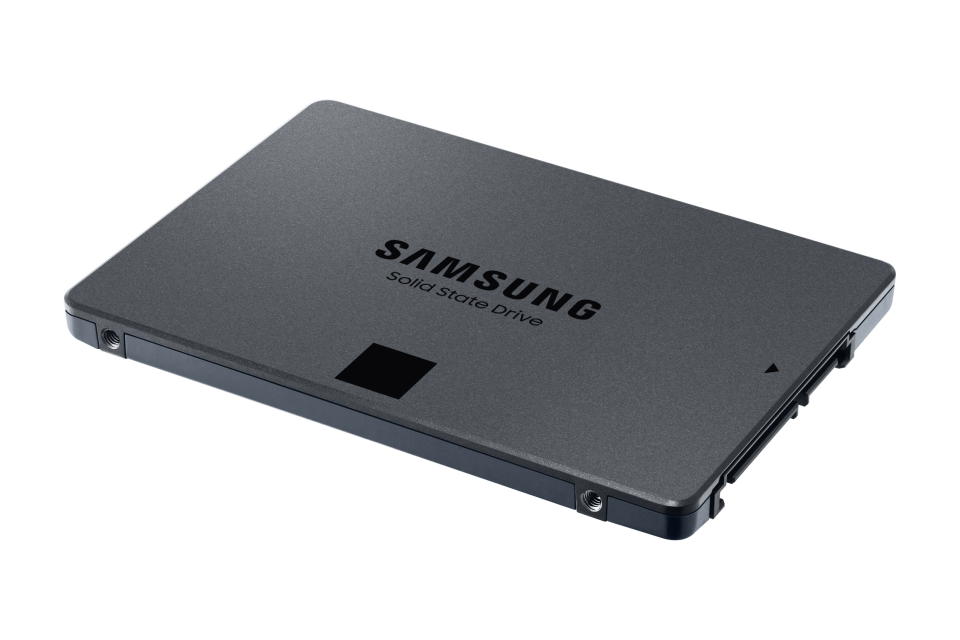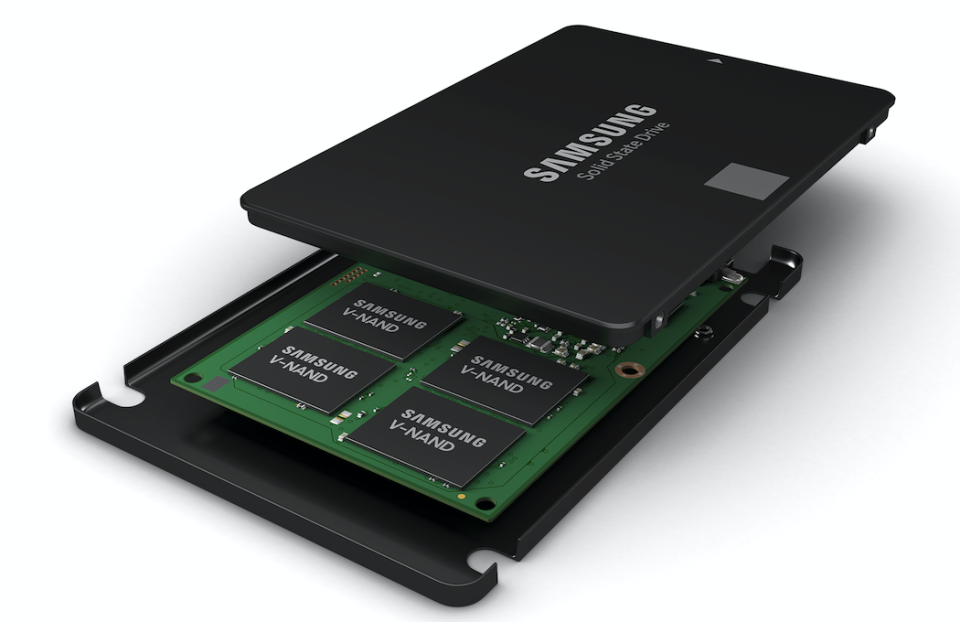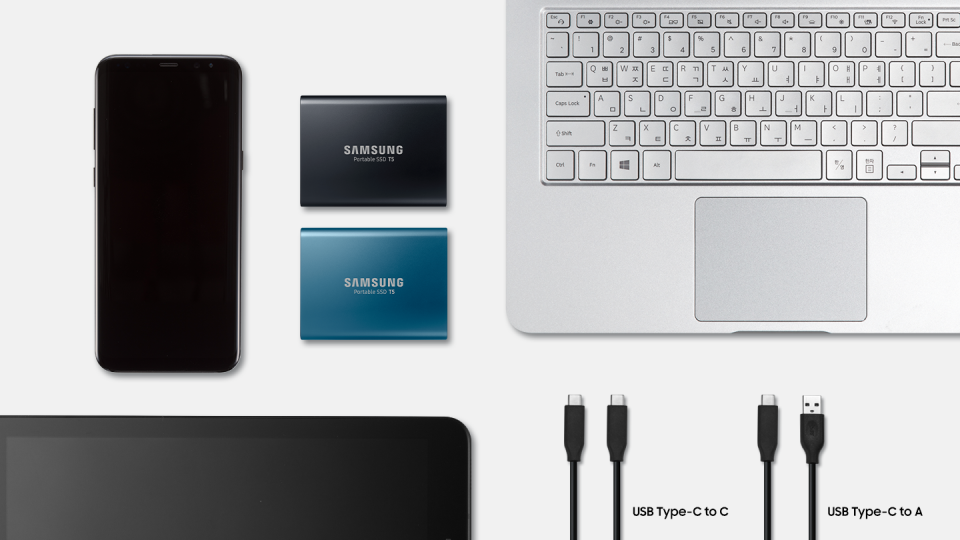A memory revolution: we explore how flash changed the world and what the future holds
We look at the evolution of flash memory with market leaders Samsung and uncover what's in store for the future of this ground-breaking tech…

Two decades ago Samsung took a leap in the dark. The company has always been known for breaking new ground, but at the beginning of the century it turned its attention to a storage technology that most others in the digital memory business considered, at best, a niche player.
That technology was flash memory, and the rest, as they say, is history.
Of course, it’s not quite that simple. In fact, by 2000 Samsung had already been experimenting with flash and its predecessors for the best part of two decades. In that time the company’s engineers had quietly refined and improved the technology, steadily increasing its speed and storage capacity. In 1994, Samsung released the first 16Mb NAND flash. In 1999 it created the first NAND flash with 1Gb of storage.
A role for flash?
The question was, what to do with it? In the early days of flash, real world applications for the technology were thin on the ground. In the late 1980s, a predecessor of flash (Mask ROM) had found a market in electronic dictionaries and early handheld gaming devices, like Game Boy and Tamagotchi. By the turn of the century, flash had become ubiquitous in other small consumer devices, like digital cameras and the first generation of portable digital music players.
But the real holy grail for storage was personal computing. By 2000, the personal computer revolution was in full swing. Laptops were becoming truly portable, and as we all did more on our PCs (some brave pioneers were even exploring something called the internet) cheap, high capacity storage was in huge demand. Back then, flash wasn’t it.
Instead, HDD (Hard Disk Drive) technology was the go-to storage solution for personal computing, despite its obvious limitations. HDD reads and writes data by magnetizing a thin magnetic film known as a platter. But because it locates files by physically rotating the platter, no matter how fast a computer’s other components are, its HDD slows the whole process down.

Flash, on the other hand, reads memory digitally, making it much faster than HDD. And because it contains no moving parts, flash is far more stable. But back in 2000, HDD could store far more data and was more cost-effective to produce, and PCs were not generally powerful enough to expose HDD’s ponderous retrieval rates. So HDD didn’t just dominate PC storage, it was also the technology of choice for games consoles, server centres and more.
The era of SSD
But Samsung wouldn’t be discouraged. In fact, the company soon found a profitable back door into the huge PC market. Thumb-sized flash drives offered PC users a portable storage solution that was smaller and more stable than floppy discs, and with capacity that was increasing every year. Many of us still use them today. Back in 2003, Samsung’s dominance of the flash drive market helped it become the world’s leading manufacturer of flash memory, a position it still holds.
And by the middle of the first decade of the new century, Samsung had started to think the unthinkable. Could flash replace HDD in computers? Nobody else was asking the question, so in 2006 the company decided to go it alone.
In that year it released the groundbreaking Sens Q30PLUS Samsung Note PC and Sens Q1 ultra-mobile PC. These were notebook computers (in effect, extremely lightweight laptops for basic computing) each with 32GB of SSD flash storage. They were a revelation, with the SSD technology much faster than traditional HDD.

With that, the era of the Solid State Drive (SSD) had arrived. SSD is essentially flash in a form computers can use, which means a NAND flash core plus a controller with firmware. It’s fast, cool and quiet, and in 2006 Samsung proved that it could replace HDD in some PCs. The next decade would see SSD making huge inroads into the laptop storage market, first in combination with HDD, and later as a complete replacement.
The future is flash
And through the 2010s, the rise of flash storage was driven by the company’s determination to continually improve the technology. In 2013, Samsung introduced three dimensional V-NAND flash, an upgrade to traditional flash that packed more memory into the same space. In turn, V-NAND paved the way for the “Era of Tera”. In 2018, the company released a 30.72TB enterprise SSD for use in data centres. In just 12 years, the storage capacity of the company’s groundbreaking flash technology had increased a thousand times.
And most recently, Samsung released the 980 PRO, a top-tier SSD bringing exceptional speeds to high-demand gaming and PC applications. Read speeds of up to 7000 megabytes a second make the 980 PRO 60 times faster than the average 7200rpm hard drive.
Today, flash is everywhere. It’s in high end laptops and next generation games consoles. It’s in mobile phones and digital cameras. It powers the huge server centres that enable everything from cloud computing to e-commerce. When you think of the digital future you might imagine a world driven by Artificial Intelligence (AI) and the Internet of Things, both of which produce huge volumes of data. Flash will become even more important as the only secondary memory solution that can securely store this mountain of information and retrieve it at ultrafast speed.

Because that’s the thing about our digital data. We don’t just want to store it somewhere, like a dusty manuscript in some forgotten archive. We want to use it, again and again, whether it’s a school essay, a business presentation, or the selfies in our phone gallery. Our devices might boast the fastest processors and the most powerful graphics cards, but if they don’t have storage to match, a lot of that power goes to waste. We can thank Samsung’s leap in the dark, all those years ago, for a storage solution that is fit for the digital future.
Find out more about the latest innovative NAND flash storage range from Samsung.
